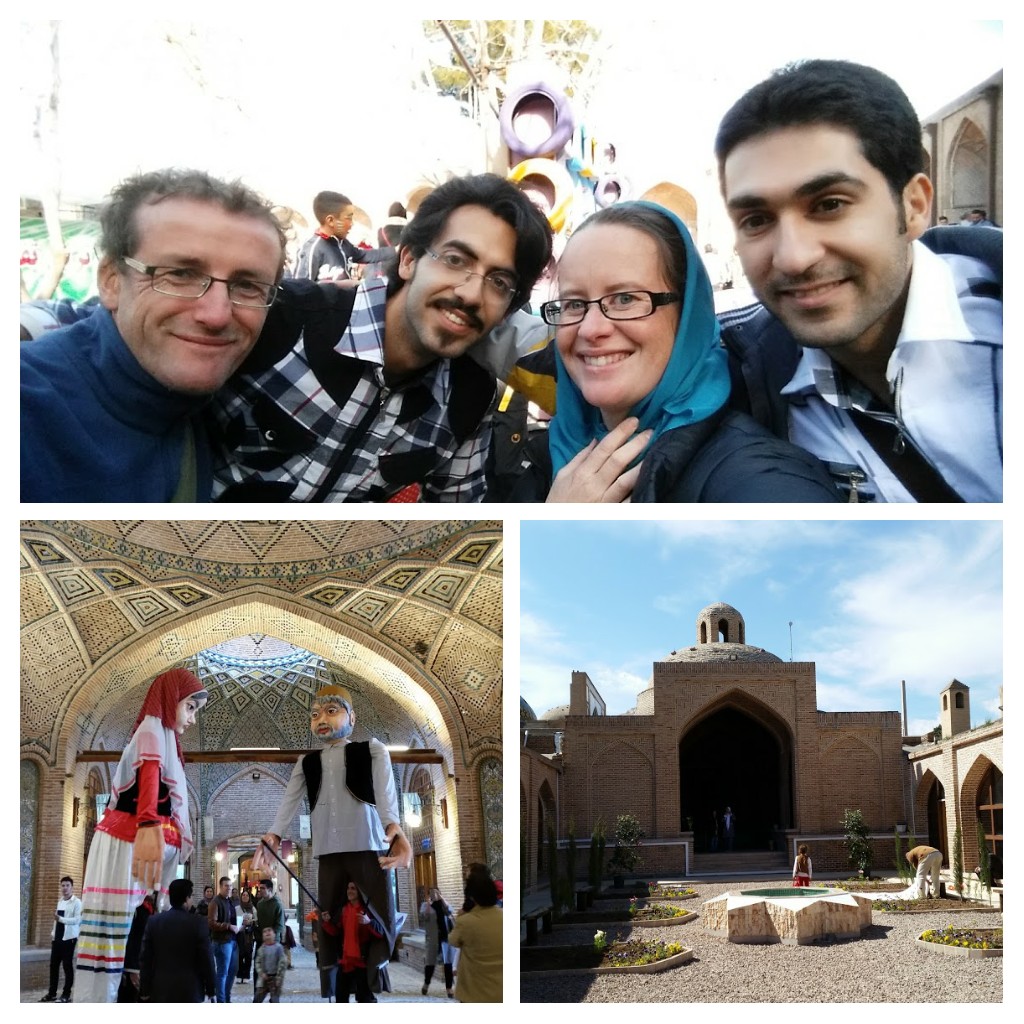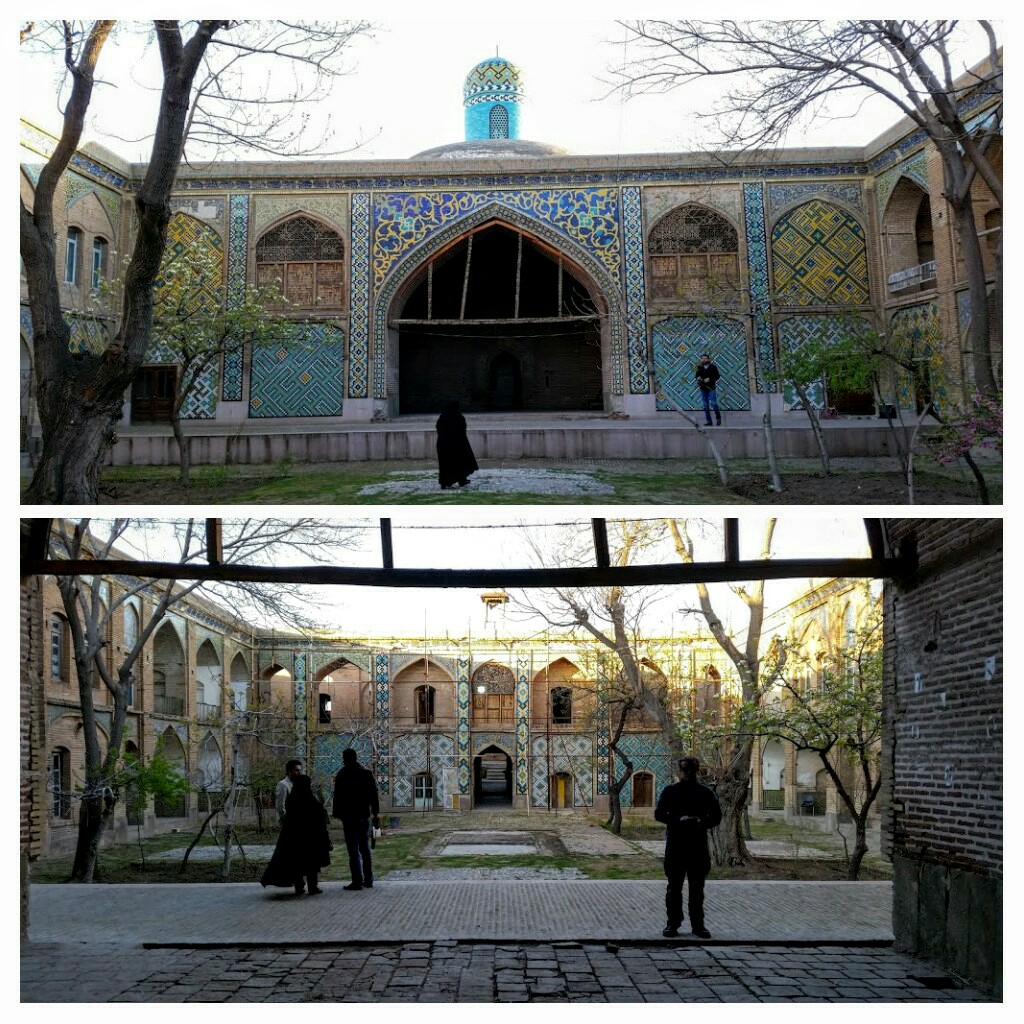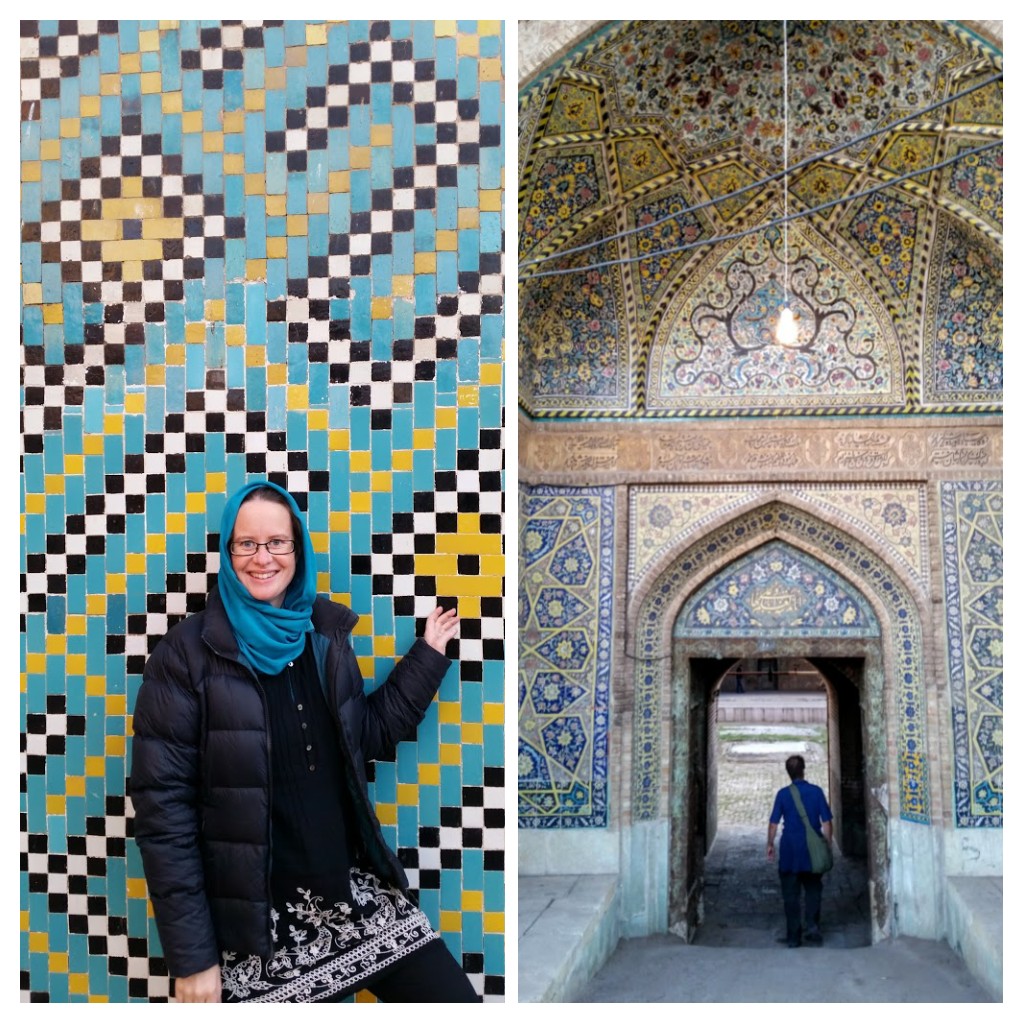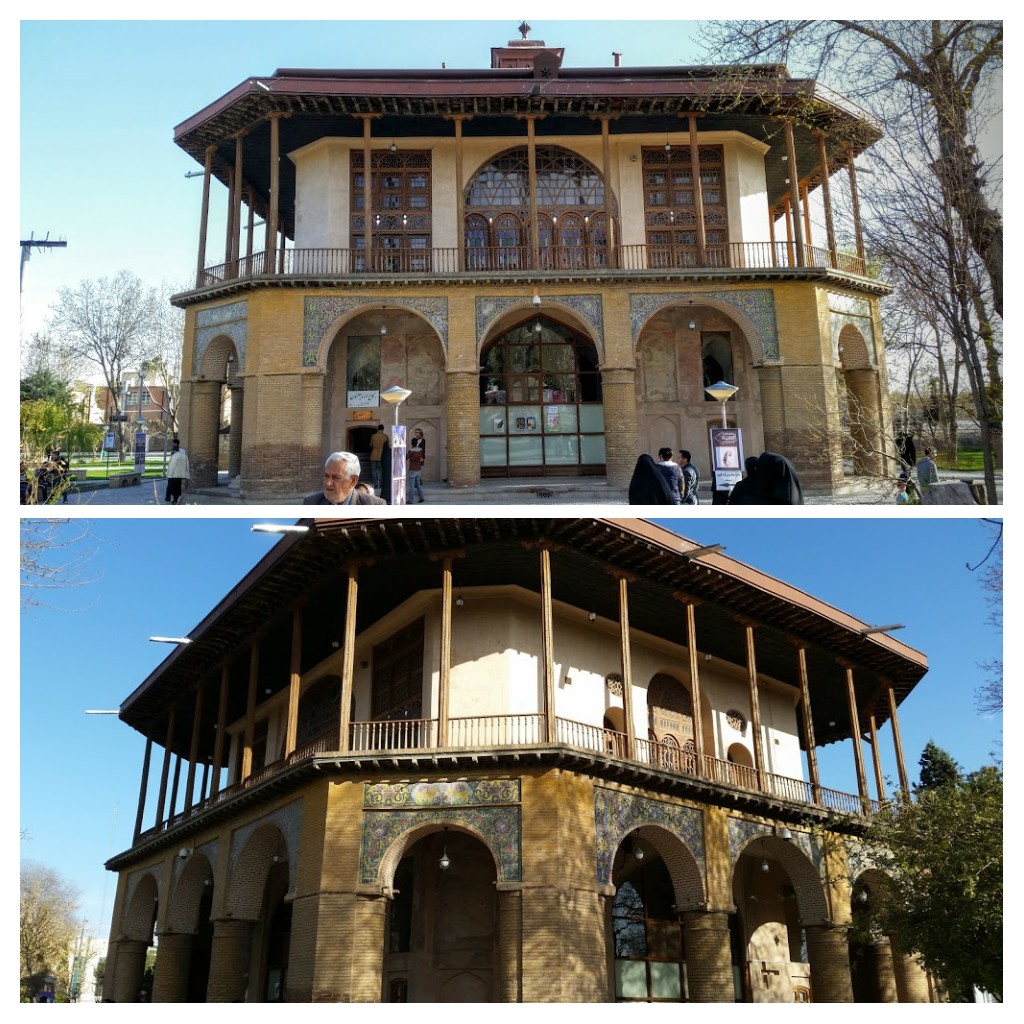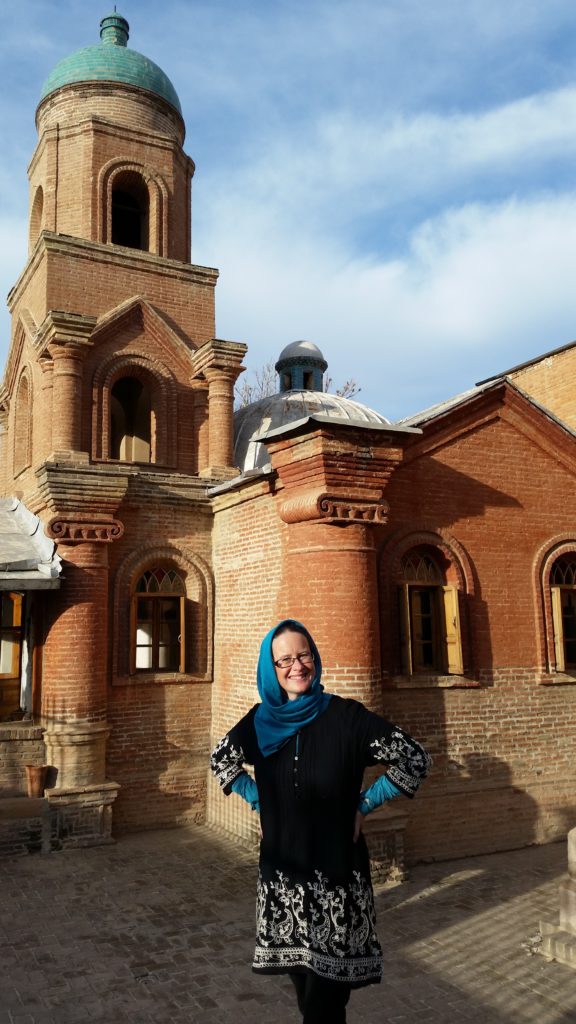Once the capital of all Iran, Qazvin these days is a smallish city with a population around 400,00 and home to a few pleasant sights. The main reason for us and many other tourists to come to Qazvin is the city’s proximity to the Alamut Valley & Castle of the Assassins. We had an amazing day trip exploring these places and it was great to be in the mountains again. But Qazvin itself was also nice to wander around.
The highlight of the town was the covered bazaar, packed with people and festivities. The 1000- year old market flourished during the Safavid era (1502-1736) when the city was also capital of Iran for a time. The majority of the bazaar structures though are from the Qajar period (1785 -1925). Really cool architecture. Perhaps because it was still the Noruz holiday when we were here, we experienced a real buzz about the place. After a nice meal here we met with some couchsurfers, two brothers, and hung out with them for a while at the bazaar. We saw two men with huge puppet like things dancing a Kurdish kind of dance, children’s stories being read aloud and toys for sale.

Something vegetarian for me – even simple things like rice and yoghurt are so beautifully presented! Qazvin Bazaar.
Qazvin has well preserved domed cisterns where water was stored underground and kept cool by wind towers. It wasn’t possible to see these up close but Antony chambered a little to get a peak over the walls at the Sardar cisterns.
Across from these cisterns we came across the Sardar School, built in 1815.
In the town’s central park was Chehel Sotun (meaning 40 pillars), built in 1510 but remodeled later, it was the Shah’s royal palace when Qazvin was the capital. I’m not sure what it’s like inside, we just looked from the outside. These days a calligraphy museum is inside.
The last little place of note was a tiny church, built by the Russians during WW2. Kantour Church is a red brick building with horseshoe windows. It’s not too far from Chehel Sotun but kind of hidden away in some back streets. It is rather cute from the outside, but not a church inside any more.
